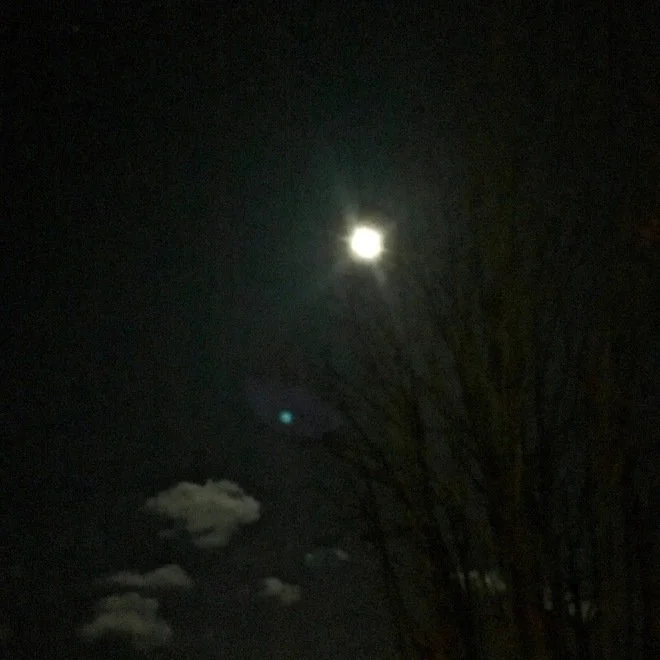Pebonkas: the Winter Maker Moon
We are in the last month of the solar year. It is the beginning of the final lunar cycle that began with the new moon on December 4, 2021 (by the modern Gregorian calendar) and which will renew on January 2, 2022. December 18th will be the full moon, marking the middle of Grandmother Nanibôsad’s (“the all-night walker”) journey through the lengthening darkness., and converging at the winter solstice with Nmahom Kizos’ (Grandfather Sun) own travel toward rest and renewal.
The twelfth full moon of the Western Abenaki solar year - occasionally there are 13 moons, depending on the offset between lunar and solar cycles - is the Winter Maker, Pebonkas, following the preceding eleventh month of Mzatanos, the Freezing Current Maker. Another name for this moon is Kchikizos, the Great Moon. Within this cycle, the shortest day and the longest night of the year approaches on the Winter Solstice, on December 21st. Bare trees are silhouetted against the crystal blackness as Nanibosad crosses the sky world in all her glory.
The name of the moon is a combination of simple roots: “pebon” which signifies “winter” combined with “-kas” as a suffix denoting “maker”. It is pronounced PEH-boon-kahs, the Winter Maker Moon. The alternate name, Kchikizos, is a combination of the two words “kchi” for “great” and “kizos” for the “full moon.” It is pronounced kih-TSEE-kee-zoose, the Great Moon.
As the Solstice marks the reversing of the sun’s path, the daylight very slowly begins to grow in length – the beginning of the new year. The winter weather, however, continues to grow colder, due to the delay caused by the earth’s thermal mass. It continues to lose the heat it soaked up in summer, until the sun’s rays become strong enough to counter the loss with life-affirming Spring. In the cold and dark, stories are told around the fire as a reminder of how everything changes, over and over. And as this cycle ends, another begins.
This [updated] post first appeared in Sokoki Sojourn here.
